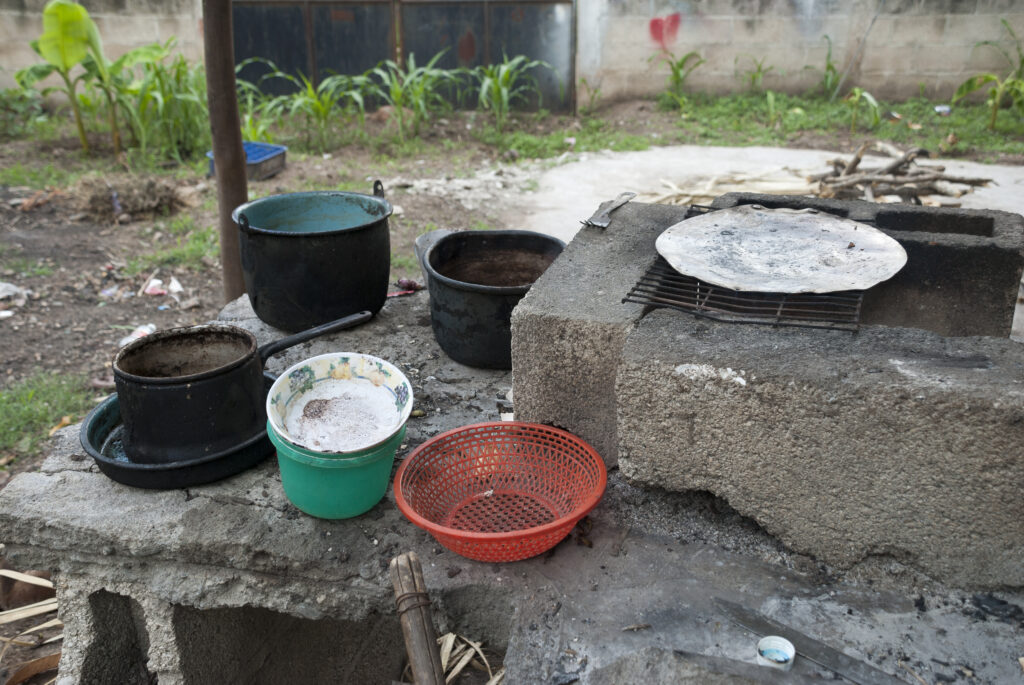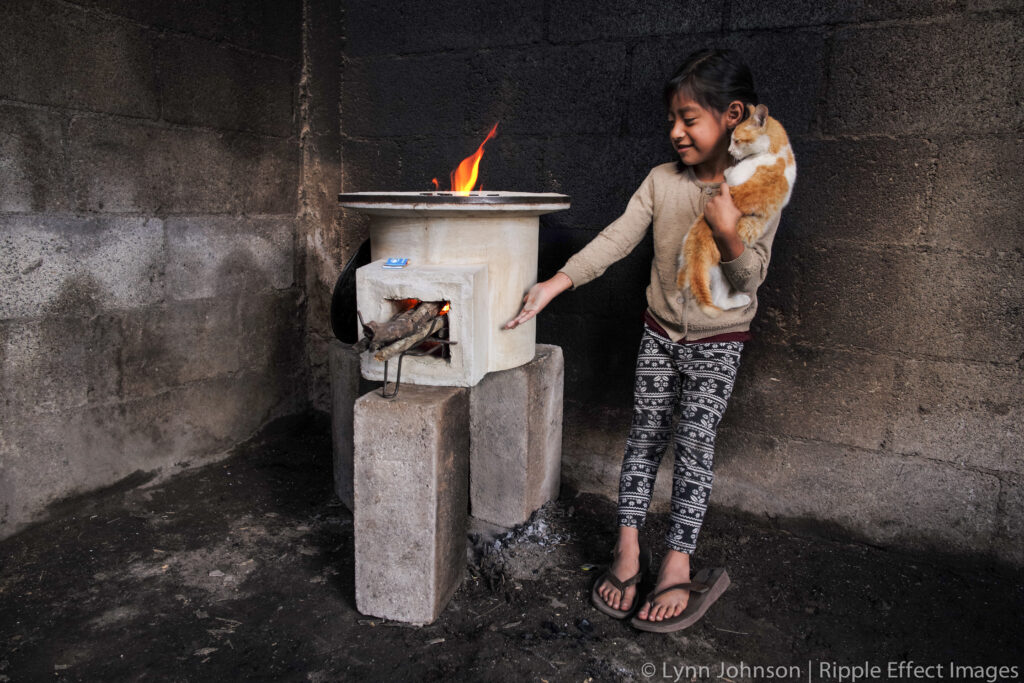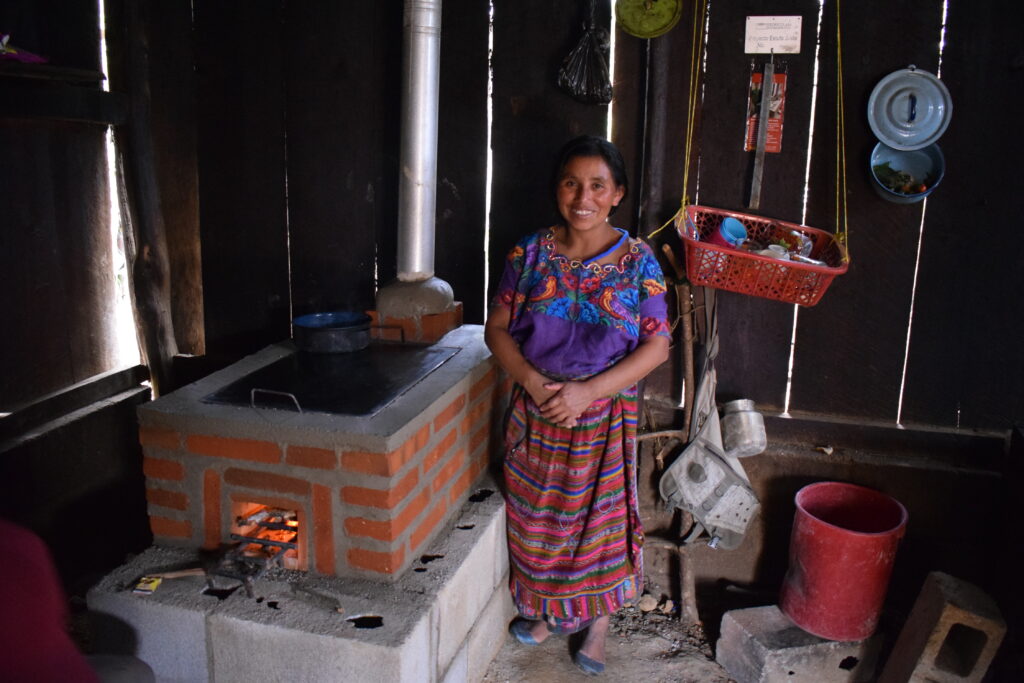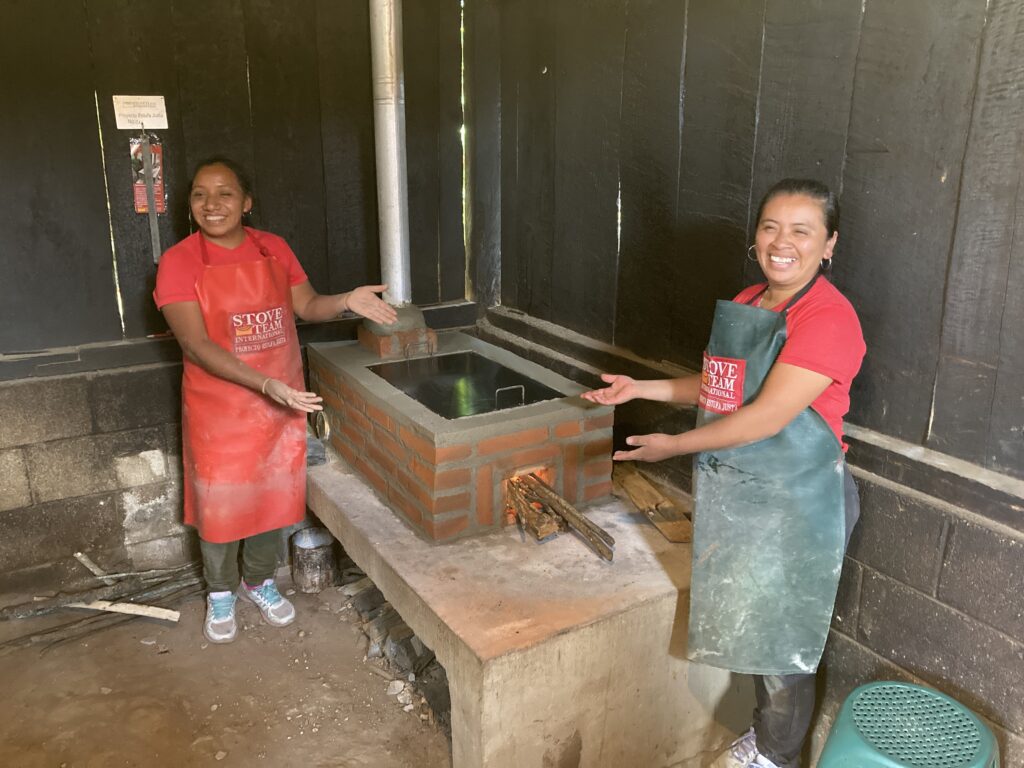

Like access to electricity, access to clean cooking falls under Sustainable Development Goal No. 7, which calls for ensuring “access to affordable, reliable, sustainable and modern energy for all” by 2030. Yet policy-makers generally give a lower priority to clean cooking than to electricity, according to Yabei Zhang, Senior Energy Specialist with the World Bank’s Energy Sector Management Assistance Program (ESMAP).
One reason for that, she said, is that clean cooking is somewhat of an “orphan” issue which doesn’t always fall under the clear responsibility of an Energy Ministry or Ministry of the Environment or Forestry Ministry. “As a result,” she said in an interview, “no one’s taking it seriously.”
Another factor is that the indoor air pollution caused by open-fire cooking tends to be invisible. It is a massive problem in the aggregate, but it takes place behind closed doors, one kitchen at a time. And most of the people breathing in that harmful smoke are poor, rural, and female.
“If all men cooked, this problem would already have been solved,” Zhang said with a smile. Women bear the brunt of the problem, spending hours each day collecting fuel, cooking, and tending the fire, and yet they don’t necessarily have a voice at decision-making levels, Zhang added.
An estimated 2.6 billion people still lack access to clean cooking, according to estimates released earlier this year by the World Health Organization (WHO). That is one third of the world’s population. Access is distributed unevenly, and most people who do not use clean fuels and technologies for cooking live in Africa or Asia.
Although the numbers are much better in Latin America and the Caribbean than in these other regions, access is far from universal. An estimated 78 million people in Latin American and Caribbean countries still lack access to clean cooking—12% of the region’s population.

Rustic outdoor kitchen in rural El Progreso, Guatemala.
The health consequences can be severe. Globally, according to WHO estimates, more than 3.8 million people die prematurely every year as a result of exposure to household pollution from burning kerosene and solid fuels (such as wood, crop wastes, charcoal, coal, and dung) in open fires and inefficient stoves. The illnesses caused by this type of pollution include pneumonia, ischemic heart disease, chronic obstructive pulmonary disease, stroke, and lung cancer.
Then there are the environmental impacts. According to one study, between 1.9% and 2.3% of global greenhouse gas emissions come from wood fuels. The burning of residential solid fuels also accounts for more than half of global emissions of black carbon, according to the World Bank. Black carbon, or soot, is a pollutant produced by the incomplete burning of organic matter.
Despite the heavy toll on human health and the environment, progress on access to clean cooking has been slow, barely keeping pace with population growth. From 2010 through 2019, according to WHO, the rate of access to clean cooking fuels and technologies increased by only about 1% per year, largely due to improvements in five countries: Brazil, China, India, Indonesia, and Pakistan.
“Current estimates project that one third of the global population will continue to use polluting fuels in 2030, with the majority residing in Sub-Saharan Africa,” the agency said.

The Ecocina is a portable style of “rocket stove” developed by StoveTeam. Photo courtesy of StoveTeam International.
Providing worldwide access to clean cooking, or at least cleaner cooking, is a more complex undertaking than it may seem at first glance. It’s not just about giving someone a better stove, said Shelby Kardas, Executive Director of StoveTeam International, a U.S.-based nonprofit organization that works in several Central American countries on this issue.
In Guatemala, so many stove projects have come and gone that some homes look like “stove graveyards,” Kardas said in an interview. A major challenge is to come up with cleaner cooking solutions that people will actually use, and that is something that can vary region to region and even house to house.
“We’re trying to change thousands of years of cooking tradition,” she said. StoveTeam is teaching people in Guatemala to build improved chimney stoves that burn wood much more efficiently than open fires, cutting the amount of fuel needed by half.
While the opportunity to cut fuel costs tends to be an effective selling point for an improved cookstove, Kardas said, an education process is still required before people internalize the fact that they no longer need a huge pile of wood to build a hot fire. “It’s hard to change human behavior,” she said.
The challenge of clean cooking does not lend itself to one-size-fits-all solutions. A 2020 World Bank report, The State of Access to Modern Energy Cooking Services, underscored the importance of contextual factors.
“Clearly,” it stated, “without a more complete understanding of the local context of cooking—including users’ experience, their physical cooking environment, and the markets and energy ecosystems in which they live—the uptake and sustained use of the stove technology-and-fuel solutions available today will remain limited.”
Some of the cleanest cooking solutions available include solar, electricity, and liquefied petroleum gas (LPG). But how effective is an electric stove if the cost of electricity is prohibitive, or if service is unreliable? Or an LPG stove if fuel prices go up, or if an adequate fuel distribution infrastructure is not in place?
“Solar cooking would be great, except people like to cook breakfast and dinner too, and solar cookers don’t work at those times of day,” said Nordica MacCarty, Executive Director of Aprovecho Research Center, a U.S.-based nonprofit organization that works on design and testing of biomass cookstoves. Recognizing that wood remains the most practical cooking fuel for many people, Aprovecho focuses on designing more efficient stoves with improved combustion and lower emissions.
Wood has some positive attributes, MacCarty said in an interview, noting that it is often a local, affordable resource that can be managed sustainably to avoid deforestation. “Wood, if you can burn it cleanly and you can harvest it renewably, is a climate-neutral fuel,” she said.

A Maya indigenous woman in the kitchen in her house in San Jorge La Laguna, Sololá, Guatemala.
Given the complexities surrounding the issue, the World Bank has developed a multi-tier framework for measuring access to modern energy cooking services. It takes more than a simple yes/no question to determine whether a household has access, Yabei Zhang explained; rather, it’s important to ask a whole series of questions related to types and number of stoves, types of fuel, costs, exposure to indoor air pollution, and other factors.
Based on the information collected, a scoring system is then used to measure the degree of a household’s access to clean cooking technology and fuels, ranging from Tiers 0-1 at the low end to Tiers 4-5 at the high end. A household in Tier 2 or 3 might be using an improved cookstove to increase fuel efficiency and reduce emissions but still be considered in transition toward clean cooking.
Complicating attempts to measure clean cooking is an issue known in this sector as “stove stacking,” in which people use different types of stoves for different purposes. This happens in the most modern households that have microwaves, toaster ovens, slow cookers, or other appliances in addition to the main stove, and it also happens in low-income households. Someone might plug in an electric kettle to boil water for tea but build a more economical wood fire to simmer a pot of beans for a few hours.
As an example of stove stacking, the World Bank report mentioned above noted the case of Ecuador, where a decades-long, heavily subsidized fuel transition program that began in the 1970s enabled the country to shift substantially away from wood toward LPG as the primary cooking fuel. “Even so,” it said, “44 percent of households that mainly use LPG for cooking continue to supplement its use with wood at least once a day.”
Interest in clean cookstoves has ebbed and flowed over the years. Nordica MacCarty, of Aprovecho, described several “waves” that have focused on different aspects, including effects on deforestation, human health, and now climate change.

The Justa stove provides plenty of surface area for cooking while using much less fuel than a traditional open fire and venting the smoke outdoors. Photo courtesy of StoveTeam International.
One important issue today, she said, is the need to improve ways to scientifically verify the real-world impacts of different cooking technologies in order to secure more funding and in some cases implement carbon trading systems to help finance projects. The Paris Agreement on climate change and the 2030 deadline for the Sustainable Development Goals are helping to raise interest in the need for clean cooking, she said.
“It’s a hard problem that has had limited success in the past, but a lot of people recognize that this is one way that we can make a huge impact on climate really quickly, if we can get the solutions figured out in a way that works,” she said.
Clean cooking efforts around the world involve an array of players including government agencies, multilateral institutions, nongovernmental organizations, development banks, private investors, research and testing institutions, stove manufacturers, and others.
In 2019, the World Bank launched a $500 million Clean Cooking Fund to galvanize political commitment and investment with the goal of achieving universal access to modern energy cooking services by 2030. The development bank works with other partners on this issue through its ESMAP initiative.
An increasing number of countries are including goals related to household energy or clean cooking in their nationally determined contributions (NDCs) under the Paris Agreement. According to the Clean Cooking Alliance, an initiative hosted by the United Nations Foundation, as of October 2021, this issue was included in the NDCs of 67 countries, including many in Latin America and the Caribbean: Barbados, Belize, Chile, Colombia, Dominican Republic, Ecuador, Guatemala, Haiti, Honduras, Peru, and Uruguay.

A home in Guatemala gets a new Justa stove with help from StoveTeam. Photo courtesy of StoveTeam International.
Before she got an improved cookstove more than a year and a half ago, Eva Hernández always ended up by herself in the kitchen.
“When you’re cooking on an open fire, the whole family runs away,” she said with a laugh. “Nobody wants to be near the smoke.”
Now that she has a more efficient stove with a chimney, her sons, ages 10 and 14, sometimes keep her company when she cooks and even lend her a hand by passing her things or chopping vegetables. The stove, she said in an interview, “is something that helps me and helps my whole family.”
Hernández, who lives in the village of Santiago Zamora, Guatemala, now works for StoveTeam International and has built cookstoves in dozens of other homes in different communities. Recently, she helped to train a group of 13 other stove builders, during a weeklong course in the city of Antigua.
She uses her own experience to explain the benefits of the stove to potential users. “I can tell people that with an improved stove, they can save time, they can save on firewood, they can take care of their health and take care of the environment and their family,” she said, adding that the stove also “works really well.”
Mary Ramírez, who took the course with her husband, said the two of them planned to build a stove for their own household soon and then help other families in their home town of Coatepeque. She said the stove will help the couple reduce their firewood expenses, which are especially high because they run a small food vending business out of their home. “I’ve learned a lot of things,” she said about the course, “including how to protect my family’s health.”

Workers from StoveTeam’s Justa project set out to install improved cookstoves. Photo courtesy of StoveTeam International.
Alex Eaton, Guatemala Country Director for StoveTeam, said the organization has been pivoting lately toward a more entrepreneurial model, in which it is training a network of stove builders who can take their skills out into their communities around the country. For each stove to be built, StoveTeam will provide a kit with some of the materials, including the combustion chamber, the chimney, and the griddle. Each beneficiary household will be responsible for building the base, buying the bricks or blocks and cement, and paying the stove builders. The out-of-pocket cost for each household comes out to between (US)$50 and $75, Eaton said, though part of the cost may be subsidized for the neediest families.
In the world of cookstoves for development, these are what are known as Justa stoves, a style of “rocket stove” designed to burn wood more cleanly and use its heat more efficiently. The Justa is named after a Honduran woman named Doña Justa Núñez, who worked with a team from Aprovecho Research Center and an organization called Trees, Water & People to develop a stove that would best meet local needs. The version StoveTeam is now promoting in Guatemala is a large stove with two burners and space in the back for tortillas.
As complicated as it is to get people to adopt cleaner cookstoves on a large scale, Eaton takes heart in the small successes along the way. “If you can cover a community with stoves and people are happy and they’re having less health problems,” he said, “that’s a win”.
 View Map
View Map